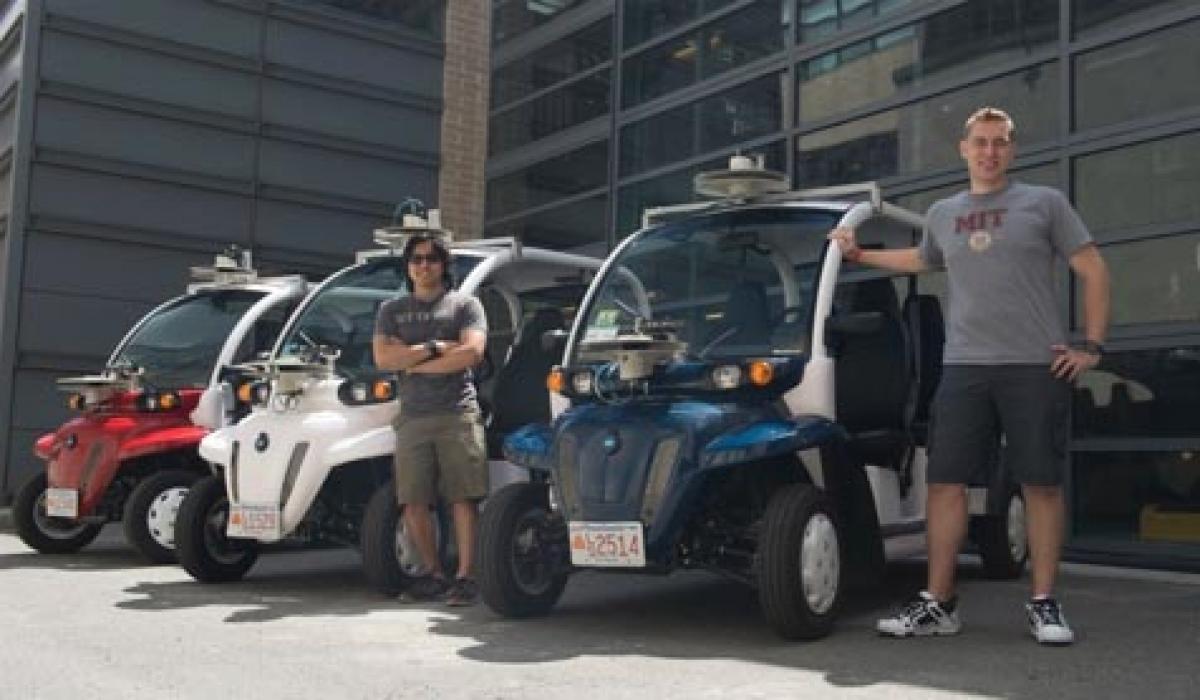Live
- Average grievance redressal time reduced to 13 days
- Cong leader dares Kishan Reddy to bathe in and drink Musi water
- Bonanza for Warangal as govt rains funds ahead of CM’s visit
- No confidence in Biren Singh govt, NPP supremo says after a day after withdrawing support
- Women of steel: Promoting environment conservation, come what may
- APSSDC signs tripartite MoU to upgrade skills of AP youth
- ‘AAP govt settling Rohingyas in Delhi, giving voter cards’
- Students advised to pursue excellence through learning
- Cold wave hits AP, Telangana: temperatures plunge to single digits
- AAP replaces Gahlot with another Jat face in Cabinet
Just In
Ford and MIT project provides ondemand electric shuttles for students


In addition to helping Ford improve its Dynamic Shuttle project, which currently operates fearing shuttles to employees at the car company’s Dearborn, Michigan campus, the collaboration with MIT will help with Ford’s general aim of exploring different kinds of future transportation under the Ford Smart Mobility umbrella.
Ford is working with MIT on a research project that will deploy a new fleet of on-demand electric shuttles that can ferry students from class-to-class both on campus and on city roads at MIT’s Cambridge, Mass. location.
Students can hail one of three electric shuttles using an app on their smartphone, and a driver will arrive quickly to pick them up. The research projects hopes to shed light on pedestrian traffic patterns, using LiDAR and other sensors combined with data including weather info and class schedules to optimize the on-demand service.
In addition to helping Ford improve its Dynamic Shuttle project, which currently operates fearing shuttles to employees at the car company’s Dearborn, Michigan campus, the collaboration with MIT will help with Ford’s general aim of exploring different kinds of future transportation under the Ford Smart Mobility umbrella.
Specifically, though Ford is also looking to this phase of the project to examine how it can improve detection of pedestrians using lower resolution LiDAR systems than are currently employed in most LiDAR-equipped cars on the road.
The autonomous vehicles that we use today use LiDAR, and it’s likely that autonomous vehicles in the future will use LiDAR,” explained Bryan Goodman, Ford’s Manger and Technical Leader of Autonomous Vehicle Analysis and the project lead on this MIT engagement in an interview.
This program is gathering good information, and experimenting with various ways to use less resolution in LiDAR to detect pedestrians than some of the LiDAR units we use today.”
Graduate student Justin Miller and undergrad Wally Wibowo of the Aerospace Controls Lab working on vehicles outfitted with sensors that match those of self-driving cars.
This work is part of the Ford-MIT Alliance and aims to predict pedestrian behaviors on short time-scales while also providing data to support a mobility-on-demand system for the MIT campus.
Graduate student Justin Miller and undergrad Wally Wibowo of the Aerospace Controls Lab working on vehicles outfitted with sensors that match those of self-driving cars. This work is part of the Ford-MIT Alliance and aims to predict pedestrian behaviors on short time-scales while also providing data to support a mobility-on-demand system for the MIT campus. William Litant/MIT
Getting better results from lower-resolution LiDAR systems has a number of potential advantages, including making hybrid self-driving tech less dependant on supplemental info provided by cameras, and potentially reducing the cost of production of self-driving vehicles.
which would make producing them at-scale more viable for car makers and using them more affordable for car owners or passengers in a shared system. This research project provides a safe way to test lower resolution hardware since a driver remains in control and the environment is more controlled than a city roadway, while still providing the benefits of a real-wold testing ground.
The project is also looking to make the most of the resources available in terms of providing good car-sharing service to students actually using the shuttles. To that end, data about trips is gathered and then shared back to the research team for analysis, which is then used to optimize pick-ups, trip routes and drop-offs.
Goodman says that data is being analyzed to accurately predict demand, which processed by algorithms that try to identify the best places for the shuttles to be positioned to maximize customer service.
These locations are then fed back to drivers to inform their driving routine, and the process continues cyclically to try to achieve the best possible results regardless of time of day, weather conditions or other variables.
Goodman said that the current phase of the project is scheduled to run through the end of this year, but MIT and Ford are already working on what the next phase or phases might look like.
One of the next steps, he says, will be to replace the driver-operated electric shuttles (which Ford terms “mobiity-on-demand” or MOD vehicles) with fully autonomous versions, and the data and learning acquired during this phase will be key to achieving that goal.
Read More »
Source:Techgig.com

© 2024 Hyderabad Media House Limited/The Hans India. All rights reserved. Powered by hocalwire.com






